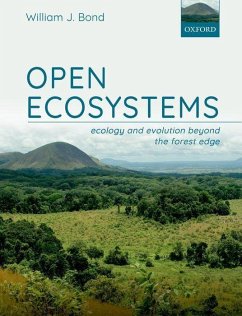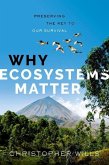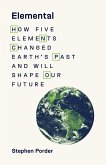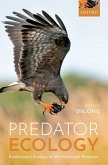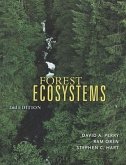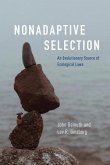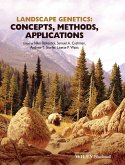William J. Bond (Professor Emeritus, Professor Emeritus, Department
Open Ecosystems
Ecology and Evolution Beyond the Forest Edge
William J. Bond (Professor Emeritus, Professor Emeritus, Department
Open Ecosystems
Ecology and Evolution Beyond the Forest Edge
- Broschiertes Buch
- Merkliste
- Auf die Merkliste
- Bewerten Bewerten
- Teilen
- Produkt teilen
- Produkterinnerung
- Produkterinnerung
Explores the geography, ecology, and antiquity of 'open ecosystems' which include grasslands, savannas, and shrublands.
Andere Kunden interessierten sich auch für
![Why Ecosystems Matter Why Ecosystems Matter]() Christopher Wills (Profe Professor Emeritus of Biological SciencesWhy Ecosystems Matter40,99 €
Christopher Wills (Profe Professor Emeritus of Biological SciencesWhy Ecosystems Matter40,99 €![Elemental Elemental]() Stephen PorderElemental31,99 €
Stephen PorderElemental31,99 €![Predator Ecology Predator Ecology]() John P. DeLong (Professor of Biology and Cedar Point Biol DirectorPredator Ecology55,99 €
John P. DeLong (Professor of Biology and Cedar Point Biol DirectorPredator Ecology55,99 €![Forest Ecosystems Forest Ecosystems]() David A. Perry (Professor Emeritus)Forest Ecosystems109,99 €
David A. Perry (Professor Emeritus)Forest Ecosystems109,99 €![Nonadaptive Selection Nonadaptive Selection]() John DamuthNonadaptive Selection43,99 €
John DamuthNonadaptive Selection43,99 €![Landscape Genetics Landscape Genetics]() Niko BalkenholLandscape Genetics140,99 €
Niko BalkenholLandscape Genetics140,99 €![Life's Engines Life's Engines]() Paul G. FalkowskiLife's Engines15,99 €
Paul G. FalkowskiLife's Engines15,99 €-
-
-
Explores the geography, ecology, and antiquity of 'open ecosystems' which include grasslands, savannas, and shrublands.
Produktdetails
- Produktdetails
- Verlag: Oxford University Press
- Seitenzahl: 192
- Erscheinungstermin: 17. März 2021
- Englisch
- Abmessung: 241mm x 190mm x 12mm
- Gewicht: 500g
- ISBN-13: 9780198869306
- ISBN-10: 0198869304
- Artikelnr.: 60595978
- Herstellerkennzeichnung
- Libri GmbH
- Europaallee 1
- 36244 Bad Hersfeld
- gpsr@libri.de
- Verlag: Oxford University Press
- Seitenzahl: 192
- Erscheinungstermin: 17. März 2021
- Englisch
- Abmessung: 241mm x 190mm x 12mm
- Gewicht: 500g
- ISBN-13: 9780198869306
- ISBN-10: 0198869304
- Artikelnr.: 60595978
- Herstellerkennzeichnung
- Libri GmbH
- Europaallee 1
- 36244 Bad Hersfeld
- gpsr@libri.de
William Bond is an Emeritus Professor in Biological Sciences at the University of Cape Town. He served as Chief Scientist for the South African Environmental Observation Network (SAEON) from 2014 to 2018. He is an ecologist with broad interests in the processes most strongly influencing vegetation change in the past and present, including fire, vertebrate herbivory, atmospheric CO2, and climate change. In addition, Professor Bond has worked on plant-animal mutualisms and on plant form and function. Particular research interests include grasslands and savannas, and winter-rainfall shrublands. He has served on the Boards of the South African National Botanical Institute and of Cape Nature and on the editorial boards of several journals. He has published more than 200 peer-reviewed scientific publications and co-authored three books. He is a Fellow of the Royal Society of South Africa and was made a Foreign Associate of the US National Academy of Sciences in 2013.
* 1: Introduction to open ecosystems: a global anomaly and a local
example
* 2: The pattern of open ecosystems and the climates in which they
occur
* 3: Uncertain ecosystems: the conceptual framework
* 4: The nature of open ecosystems
* 5: The origins of closed and open ecosystems: Fossils and phylogenies
* 6: Soils and open ecosystems
* 7: Fire and open ecosystems
* 8: Vertebrate herbivory and open ecosystems
* 9: The future of open ecosystems
example
* 2: The pattern of open ecosystems and the climates in which they
occur
* 3: Uncertain ecosystems: the conceptual framework
* 4: The nature of open ecosystems
* 5: The origins of closed and open ecosystems: Fossils and phylogenies
* 6: Soils and open ecosystems
* 7: Fire and open ecosystems
* 8: Vertebrate herbivory and open ecosystems
* 9: The future of open ecosystems
* 1: Introduction to open ecosystems: a global anomaly and a local
example
* 2: The pattern of open ecosystems and the climates in which they
occur
* 3: Uncertain ecosystems: the conceptual framework
* 4: The nature of open ecosystems
* 5: The origins of closed and open ecosystems: Fossils and phylogenies
* 6: Soils and open ecosystems
* 7: Fire and open ecosystems
* 8: Vertebrate herbivory and open ecosystems
* 9: The future of open ecosystems
example
* 2: The pattern of open ecosystems and the climates in which they
occur
* 3: Uncertain ecosystems: the conceptual framework
* 4: The nature of open ecosystems
* 5: The origins of closed and open ecosystems: Fossils and phylogenies
* 6: Soils and open ecosystems
* 7: Fire and open ecosystems
* 8: Vertebrate herbivory and open ecosystems
* 9: The future of open ecosystems

